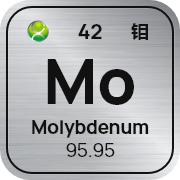2023/09/19
Overview
Kaixin Alloy Materials Co., Ltd., as a supplier specializing in the production and manufacturing of special alloys for 16 years, is committed to popularizing the knowledge of the metallurgical industry to practitioners around the world. We hope to do our best to promote the development of the industry.
In this article we have compiled common concepts that we can think of in the metallurgical industry. It serves as a quick reference as you learn about the industry.
We know that many terms are not easy to understand. Therefore, we try to give the simplest and understandable explanation of each concept. After you have a basic understanding, you can refer to our recommended articles to learn some industry knowledge in more detail.
At the beginning of the article, we would like to introduce our company. We are a Chinese supplier focusing on providing nickel alloy/high temperature alloy materials to global customers. If you visit our blog page, you will be amazed by our efforts to popularize industry knowledge. If you have any purchasing needs, you can refer to our product page. You can also contact us via the following email: anna.pei@kx-alloy.com
Below is the content of this article. You can find concepts that interest you within a broad category.
Metal category
Metals are divided into pure metals and alloys.
Pure metal
A pure metal is a single metallic substance. The properties of pure metals tend to be relatively simple. Common pure metals include iron, nickel, copper, etc.
Alloy
Alloys are more complex metals composed of multiple metals. It usually combines the properties of different metals.
Trademark
The grade refers to the code name of different alloys. Different grades of alloys have different chemical compositions. Therefore, they also have different physical and mechanical properties. Different grades are suitable for different application scenarios.
Matrix
The most abundant metal in an alloy is called the matrix. For example: The matrix of iron-based alloys is iron. The matrix of nickel-based alloys is nickel.
Superalloy
High temperature alloy is a general term for a series of high temperature resistant alloys. According to different substrates, high-temperature alloys are divided into iron-based alloys, nickel-based alloys and cobalt-based alloys. The same thing is that they all contain certain amounts of nickel and chromium. High-temperature alloys also generally have better corrosion resistance than stainless steel. It is commonly used in the aerospace, chemical and nuclear energy industries.
Nickel-based alloy
Nickel-based alloys are the most mainstream high-temperature alloys. Its main component is nickel. The minor components are chromium, molybdenum and iron. Nickel-based alloys have good high temperature resistance and corrosion resistance. The price is often dozens of times that of stainless steel.
Cobalt based alloy
The main component of cobalt-based alloys is cobalt. The minor components are nickel and chromium. Its high temperature resistance and corrosion resistance tend to be better than those of nickel-based alloys, but the price will be more expensive.
Iron-based alloy
Iron-based alloys refer to high-temperature alloys whose main component is iron. The minor components are nickel and chromium. Its performance is generally inferior to nickel-based alloys but better than stainless steel. It is cheaper than nickel-based alloys.
Monel alloy
Monel is a nickel-copper alloy. It is formed by adding copper element to nickel. Monel alloy is characterized by better corrosion resistance than stainless steel at room temperature. Its typical application is marine engineering. Monel's properties at high temperatures are average, so it is not a high-temperature alloy.
Inconel
Inconel is a nickel-chromium-iron alloy. It is formed by adding chromium to nickel. It is the most commonly used nickel-based superalloy. Has excellent high temperature resistance and excellent oxidation resistance.
Inconel
Inco is a nickel-chromium-iron alloy. It reduces the nickel content and increases the iron content based on Inconel alloy. Therefore, it does not perform as well as Inconel, but it is cheaper.
Hastelloy
Hastelloy is a nickel-chromium-molybdenum alloy. Nickel makes the alloy resistant to high temperatures. Chromium and molybdenum make the alloy resistant to oxidation and reduction. Hastelloy has better overall corrosion resistance than Inconel.
solid solution
Solid solution refers to a substance dissolved in a solid substance. This phenomenon mainly exists in various alloys. Just like salt can dissolve in water, various metal elements in the alloy can also dissolve in the matrix. The role of solid solution is to stabilize the properties of the alloy. It contributes to the alloy's high-temperature properties.
solid solution strengthened alloy
Solid solution strengthened alloys refer to alloys whose properties are stabilized by solid solution. This alloy can only be strengthened by cold working. Therefore, the strength of solid solution strengthened alloys is limited. In addition, the strength of solid solution strengthened alloys is closely related to the chemical composition itself.
precipitation
Precipitation is the opposite phenomenon to solid solution. Just as salt crystals precipitate when brine evaporates, metallic elements also precipitate from the alloy solid solution during aging. The purpose of precipitation is to greatly increase the strength of the alloy. It should be noted that not all alloys can increase strength through precipitation.
precipitation strengthened alloy
Precipitation-strengthened alloys refer to alloys that can be strengthened by precipitation. Due to the presence of one or two strengthening crystal phases in solid solution strengthened alloys, their strength is much higher than that of solid solution strengthened alloys. The key elements to achieve precipitation strengthening are aluminum, titanium, niobium and tantalum.
low expansion alloy
Low expansion alloy is a special type of alloy. Their coefficient of thermal expansion is very low. When the temperature increases, the volume does not change significantly.
Chemical composition
Alloys are made by fusing multiple metals. Different elements have different effects on alloys. Different alloy grades have different chemical compositions. Some of these ingredients are beneficial to the alloy, while others are harmful. Here are the roles of some of the chemical components in alloys.
Iron

Iron is the 26th metallic element. It is the main element in iron-based alloys and steels. It plays a solid solution strengthening role in nickel-based alloys and cobalt-based alloys. Iron also reduces costs.
Nickel

Nickel is the 28th metallic element. It can stabilize the alloy structure in the alloy. It is the main source of alloy's high temperature resistance.
Chromium

Chromium is the 24th metallic element. It mainly plays an antioxidant role in alloys. In addition, chromium also has a certain solid solution strengthening effect and a small amount of precipitation strengthening effect.
Molybdenum

Molybdenum is the 42nd metallic element. It not only plays an anti-reduction role in the alloy, but also plays an obvious role in solid solution strengthening.
Cobalt

Cobalt is the 27th metallic element. It exists in matrix form in cobalt-based alloys. In other alloys, it mainly plays a solid solution strengthening role. In addition, in low-expansion alloys, cobalt can reduce the effect of temperature on the thermal expansion coefficient.
Aluminum

Aluminum is the 13th metallic element. It plays a precipitation strengthening role in alloys. In addition, it also has certain antioxidant properties.
Titanium

Titanium is the 22nd metallic element. It often appears together with aluminum, enhancing the precipitation strengthening effect of aluminum.
Copper

Copper is the 29th metallic element. It has good antioxidant effect in alloys. However, its antioxidant properties tend to fail at high temperatures.
Niobium

Niobium is the 41st metallic element. It has both solid solution strengthening and precipitation strengthening effects in alloys. Unlike aluminum, its precipitation strengthening effect is only effective at medium and low temperatures.
Tantalum

Tantalum is the 73rd metallic element. It often coexists with niobium and plays a role in strengthening precipitation. Tantalum also plays a good role in solid solution strengthening. Additionally, it contributes to the alloy's resistance to hot corrosion.
vanadium

Vanadium is the 23rd metallic element. Mainly plays the role of solid solution strengthening.
Tungsten

Tungsten is the 74th metallic element. Its solid solution strengthening effect is obvious. In addition, tungsten can improve the alloy's resistance to pitting corrosion.
Carbon

Carbon is the number 6 non-metallic element. The purity of the alloy can be improved during the smelting process. Among the alloy components, carbon can play a role in improving strength.
Manganese

Manganese is the 25th metallic element. It has certain beneficial effects in alloys. However, it is seen more as a harmful element. It reduces the durability of the alloy.
Silicon

Silicon is the 14th non-metallic element. In alloys, it is a harmful element. It reduces the alloy's grain boundary strength, durability and tensile properties. It can also cause cracks. In a few alloys, silicon acts as an antioxidant.
Phosphorus

Phosphorus is the 15th non-metallic element. Adding a certain amount of phosphorus to the alloy can improve the creep strength of the alloy. But in more cases, phosphorus will reduce tensile properties and lead to cracks.
Sulfur

Sulfur is the 16th non-metallic element. It is a completely harmful element in alloys. Sulfur not only causes cracks but also reduces the durability, transient performance and fatigue strength of the alloy.
Boron

Boron is the fifth non-metallic element. Improves the strength and castability of the alloy. However, excess boron can adversely affect durability performance.
Harmful elements
Elements such as sulfur, silicon, manganese and phosphorus are often considered harmful elements in alloys. They reduce the alloy's creep strength, fatigue strength, durability and transient properties.
Purity
In alloys, purity is a measure of how well an alloy controls harmful elements. The lower the number of harmful elements in the alloy, the higher the purity of the alloy.
In pure metals, purity is measured by the amount of impurities. The fewer impurities, the higher the purity of the metal.




